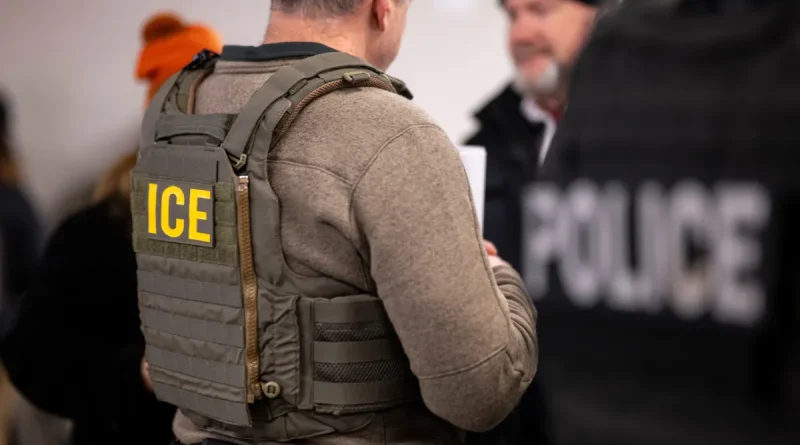ICE Purchases Vehicles Equipped with Fake Cell Towers for Phone Surveillance
Earlier this year, the U.S. Immigration and Customs Enforcement (ICE) allocated $825,000 to a company that focuses on vehicles outfitted with various law enforcement technologies, including “cell-site simulators” used for monitoring nearby phones.
Public records reveal that the award, dated May 8, aims to “provide Cell Site Simulator (CSS) Vehicles to support the Homeland Security Technical Operations program” and is a modification for “additional CSS Vehicles.”
This contract was established with TechOps Specialty Vehicles (TOSV), a Maryland-based company. TOSV previously signed a similar contract with ICE in September 2024 for $818,000, suggesting that their collaboration predates the Trump administration.
Jon Brianas, TOSV’s president, informed TechCrunch via email that he could not disclose specifics about the ICE contracts and the vehicles, citing “trade secrets.” However, he did confirm that the company supplies cell-site simulators, although they do not manufacture the devices themselves.
“We don’t produce electrical, comms, and technology components; we integrate those products into our overall vehicle designs,” Brianas stated, declining to reveal the source of TOSV’s cell-site simulators.
This is the latest federal contract that highlights some of the technologies underpinning the Trump administration’s deportation initiatives.
Contact Us
Do you have more information on ICE’s use of cell-site simulators? If you’re using a personal device, feel free to reach out to Lorenzo Franceschi-Bicchierai securely on Signal at +1 917 257 1382, or via Telegram and Keybase @lorenzofb, or through email. You may also contact TechCrunch via SecureDrop.
In early September, Forbes uncovered a newly unsealed search warrant that revealed ICE utilized a cell-site simulator to locate an individual allegedly connected to a criminal gang in the U.S., who had been ordered to leave the country in 2023. The report also mentioned a contract for “cell site simulator vehicles,” without disclosing the supplier’s identity.
TechCrunch Event
San Francisco
|
October 27-29, 2025
Cell-site simulators, often referred to as “stingrays,” are named after early models created by the defense contractor Harris (now L3Harris). Over time, “stingray” has become a generic term for this technology, commonly called IMSI catchers, where IMSI stands for International Mobile Subscriber Identity, a unique identifier for every cellphone user worldwide.
These cell-site simulator tools can mimic cellphone towers, deceiving nearby phones into connecting to the device. This enables law enforcement to better determine the real-world location of the phones and their users.
Certain cell-site simulators can also intercept standard calls, text messages, and internet data.
Authorities can collect data from traditional cellphone towers to ascertain a suspect’s current or previous location, though such data often lacks accuracy.
Devices like stingrays have been in use by law enforcement for over a decade and have faced significant critique due to the fact that authorities may not always obtain a warrant for their operation. Critics contend that these devices can inadvertently collect data from innocent individuals. Furthermore, their usage is shrouded in secrecy as agencies employing them are bound by strict non-disclosure agreements regarding their function.
ICE has a long-standing history of utilizing cell-site simulators. In 2020, records obtained by the American Civil Liberties Union revealed that ICE had deployed these devices at least 466 times between 2017 and 2019. The agency reportedly used them more than 1,885 times from 2013 to 2017, according to documents acquired by BuzzFeed News at that time.
ICE acknowledged TechCrunch’s inquiry but did not respond to several questions, including the specific purposes of these vehicles, their recent deployments, and whether the agency always obtains warrants when utilizing cell-site simulators.
From Surveillance Vans to Bookmobiles
Situated just outside Washington, DC, TOSV provides a range of customizable vehicles for law enforcement, including vans designed for SWAT teams, bomb squads, and “mobile lab” and “covert surveillance” vehicles.
Among their vehicle offerings, TOSV outlines several “projects,” one of which includes DHS Mobile Forensic Labs, referring to the Department of Homeland Security.
According to their website, these mobile forensic vans are “equipped for on-site forensic analysis and documentation,” feature “secure compartments for evidence preservation and investigative tools,” and allow for “seamless case file updates and evidence logging.”
Another project is the DHS Mobile Command Van, which TOSV states is “configurable for advanced surveillance and mission coordination.”
It remains unclear whether these vans are the same ones that incorporate cell-site simulators, as there is no reference to such technology on TOSV’s website.
ICE also holds additional contracts with TOSV for mobile forensic labs, which do not specify the technologies integrated into the vehicles.
Additionally, according to TOSV’s website, the company also offers “bookmobiles” that function as mobile libraries, along with vehicles for medical and fire departments.



